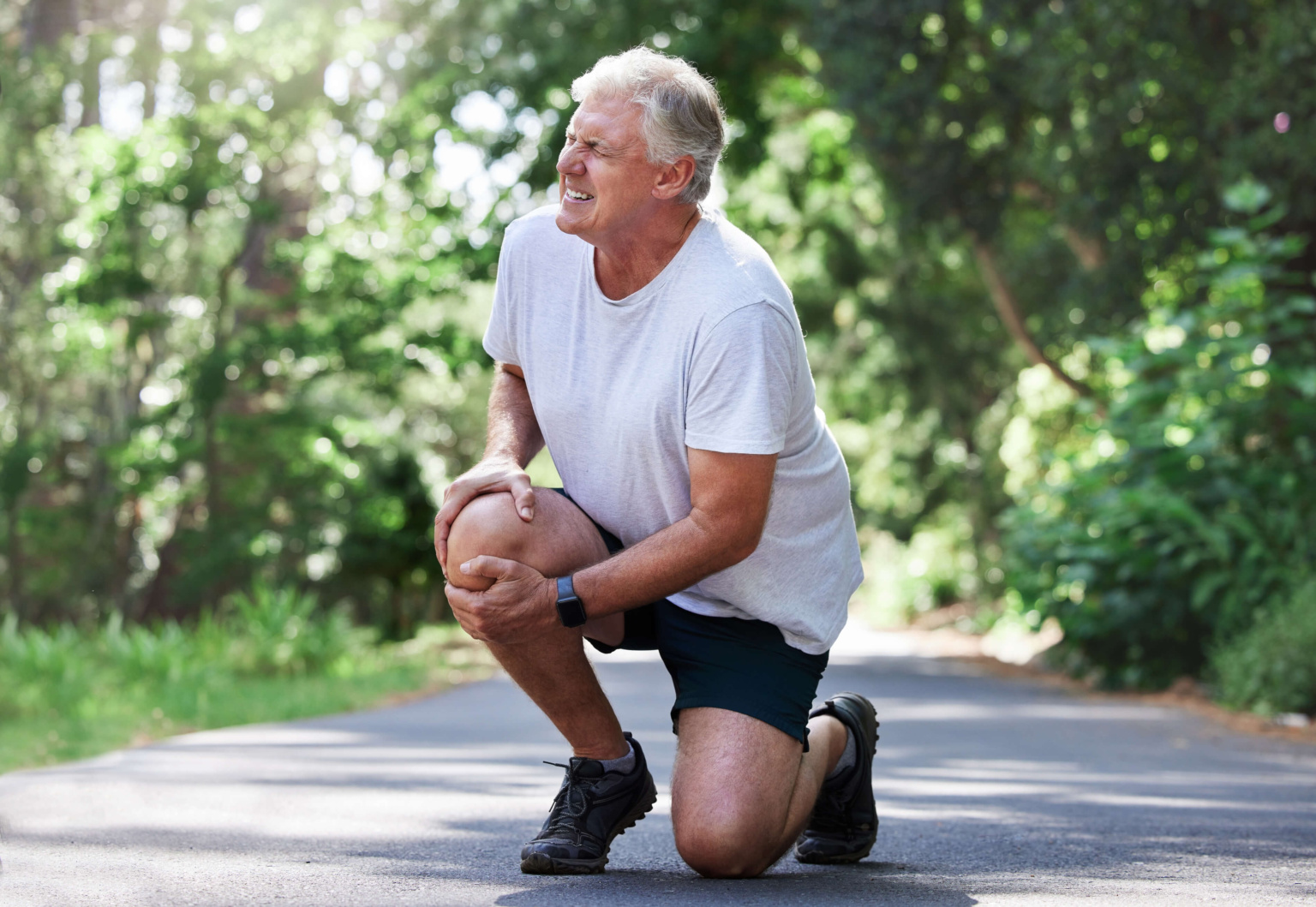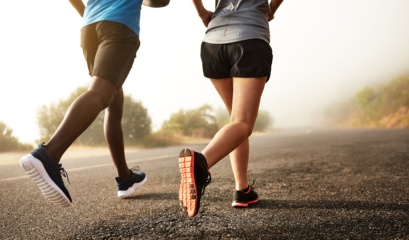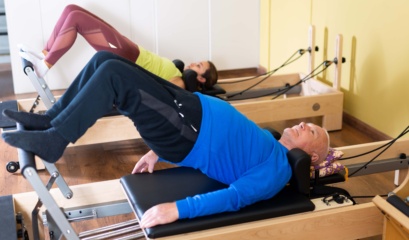An anterior cruciate ligament (more commonly known as the ACL) injury is one of the most common knee injuries. Unfortunately, it can also be quite a severe problem. That being said, an ACL injury doesn’t have to mean the end of your sporting career or social netball games. In this article, we cover the primary causes, symptoms, and treatments of ACL injuries, as well as its basic anatomy. Want some exercises to help with the pain? Read our article on 7 exercises for knee pain.
What is an ACL Injury?

An ACL injury is a tear or sprain of the anterior cruciate ligament. The ACL is the ligament that connects your femur (thighbone) to your tibia (shinbone) and runs right in the middle of the knee. Its purpose is to stabilise the knee joint and prevent it from excessive forward movement or excessive twisting. Plainly put, it’s quite important!
Symptoms of an ACL Injury
Symptoms of an ACL injury are usually noticed fairly immediately. Most of the time the person suffering the injury won’t be able to continue whatever the activity was that they were performing.
- An Audible Pop – One of the most telling signs of a full ACL tear is a loud pop or a “popping” sensation in the knee at the time of injury. The ACL is a very thick ligament and so when it tears fully it pops. If you hear this, be sure to stop whatever activity you are doing immediately!
- Severe Pain – The injury is often accompanied by intense pain, particularly around the outside and back of the knee. This pain usually makes it impossible to continue any activity and can be severe enough to restrict movement.
- Rapid Swelling – Swelling generally occurs within the first few hours post-injury, contributing to a noticeable loss of knee movement and function.
- Reduced Range of Motion – The swelling and pain lead to a significant reduction in knee mobility, often preventing the knee from fully extending or bending.
- Instability and Weight-Bearing Difficulty – A common and concerning symptom is a sensation of instability or the knee “giving way” when trying to bear weight or walk. This can manifest as a feeling that the knee might not support your weight or might buckle under pressure.
If you notice any of these symptoms, stop whatever activity you were doing and seek immediate medical attention from your doctor. If the pain is severe, go to the ER, otherwise, it is best to seek advice from a walk-in GP clinic. Do your best to not put weight on the knee, using your arms to find support from either other people around you or by leaning on nearby objects. A doctor will be able to assess the extent of the injury and provide you with a treatment plan going forward.
Causes of an ACL Injury
An ACL (anterior cruciate ligament) injury usually occurs during sudden or intense movements that place excessive stress on the knee, such as:
- Sudden Direction Changes: Rapidly changing direction, often referred to as “cutting,” especially when the feet are firmly planted, can strain or tear the ACL.
- Improper Landings: Landing awkwardly from a jump, where the knee fails to align correctly under the body’s weight, is a common cause.
- Abrupt Stops: Stopping suddenly while running or moving can jolt the knee, leading to potential ligament damage.
- Direct Impact: Receiving a direct blow to the knee, such as what might occur during a football tackle or other contact sports, can forcefully stretch or tear the ACL.
On top of these common causes of ACL injuries, there are also risk factors that increase the likelihood of suffering from an ACL injury.
Risk Factors
- Gender – Research shows that female athletes are more likely to suffer from ACL injuries than their male counterparts. This disparity is thought to be due to anatomical differences, variations in muscle strength, conditioning, control, and possibly hormonal influences.
- Age – ACL injuries are most frequently reported among individuals aged 15 to 45, as this is the age range most typically associated with higher physical activity levels.
- Sports Participation – Engaging in sports that involve sudden stops, jumps, or changes in direction increases the risk of ACL injuries. Sports such as basketball, football, volleyball, downhill skiing, lacrosse, and tennis are particularly high-risk due to their dynamic and high-impact nature.
- Previous ACL Injury – Individuals who have previously suffered an ACL tear are at a higher risk of re-injuring the same knee or injuring the opposite knee. The risk is notably higher within the first year after the initial injury.
- Poor Conditioning and Faulty Movement Patterns – Inadequate physical conditioning and improper movement techniques, such as knees moving inward during squats, can also predispose individuals to ACL injuries.
Inappropriate Gear and Environment – Using sports equipment that is poorly maintained, such as ski bindings that are not properly adjusted, or wearing ill-fitting footwear can contribute to the risk. Additionally, playing on surfaces like artificial turf has been associated with a higher incidence of ACL tears, for certain sports.
Diagnosis
Diagnosing an ACL injury involves a combination of physical examinations and imaging tests to assess the extent of the injury and rule out other potential issues. Here’s how the diagnosis typically goes:
Physical Examination
Initially, your doctor will conduct a thorough examination of your knee, focusing on:
- Swelling and Tenderness – Comparing your injured knee with the uninjured one to identify any signs of swelling or tenderness.
- Range of Motion – The doctor will manipulate your knee into various positions to check the range of motion and the joint’s overall functionality.
- Stability Tests – Specific assessments are performed to evaluate the stability of the ACL and to check for damage to other knee structures like cartilage and collateral ligaments. These tests help determine if the ACL is intact or torn.
Imaging Tests
Often a physical exam is sufficient for diagnosing an ACL injury, but imaging tests are often used to confirm the diagnosis and understand the injury’s severity:
- X-rays – These are used primarily to rule out bone fractures, as X-rays do not show soft tissues such as ligaments and tendons.
- Magnetic Resonance Imaging (MRI) – An MRI provides detailed images of both hard and soft tissues within the knee. It can reveal the extent of an ACL tear and also show any associated damage to other knee structures, such as the meniscus and cartilage.
- Ultrasound – This test uses sound waves to create images of internal structures and may be employed to examine the ligaments, tendons, and muscles for any injuries.
The tear is then usually placed into one of three grades:
Categorising the Injury
Grade 1
This is the mildest form of an ACL injury, where the ligament is stretched but not torn. Despite the stretching, the ACL still provides sufficient stability to the knee joint, and the integrity of the knee’s movement is largely preserved.
Grade 2
Also referred to as a partial tear of the ACL, this grade is less common. The ligament is stretched to the point where it partially tears. This results in a reduction in the knee’s stability, though some function is still maintained.
Grade 3
This represents the most severe form of ACL injury, where the ligament is completely torn. With the ligament no longer intact, the knee loses all stability provided by the ACL, leading to significant impairment and instability.
Tibial Spine Avulsion ACL Injury
Common in adolescents, this injury occurs when the ACL does not tear, but the bony attachment of the ligament on the tibia is pulled off (ouch!). The severity of this injury can vary, but it generally results in some degree of weakness or instability in the knee. The treatment and prognosis depend on how far the bony attachment has been displaced.
Treatment
Treating an ACL (anterior cruciate ligament) injury effectively involves a combination of immediate care, physiotherapy, and possibly surgery, depending on the severity of the injury and the patient’s activity level and goals.
Immediate Care: The R.I.C.E. Method
Right after an ACL injury, first aid is crucial to minimise pain and swelling. We recommend the R.I.C.E.
- Rest – Avoid putting weight on the injured knee and limit movement to facilitate healing.
- Ice – Apply ice to the knee for 20 minutes every two hours while awake to reduce swelling.
- Compression – Use an elastic bandage or a compression wrap around the knee to help control swelling.
- Elevation – Keep the knee elevated on pillows, above the level of the heart, to further reduce swelling.
Physiotherapy
Physiotherapy begins soon after the injury, even if surgery is later required. The goals of physio are to:
- Reduce pain and swelling.
- Restore full range of motion.
- Strengthen surrounding muscles.
- Stabilise the knee.
A physiotherapist will guide you through exercises to meet these goals, which you may perform under supervision or at home. Temporary use of a knee brace and crutches may be necessary to stabilise the knee and reduce weight-bearing pressure. If you’re looking for a trusted physiotherapist in Sydney to help with your ACL injury, contact us today. We have years of experience and have treated all grades of ACL injury in both adults and children.
Surgical Treatment
Surgery may be recommended, particularly for athletes or active individuals who wish to return to high-demand sports, or if the knee buckles during daily activities. During ACL reconstruction:
- The damaged ligament is removed.
- It is replaced with a graft made from a tendon (autograft from the patient or allograft from a donor).
- This graft acts as scaffolding for a new ligament to grow on.
Post-surgery, physiotherapy is crucial to regain knee function and strength. The length of recovery before returning to sports can vary, often taking a year or more, depending on the success of the surgery and rehab. Patients are carefully monitored through various stages of their rehabilitation to ensure optimal recovery of strength, stability, and movement patterns before resuming sports activities.
Nonsurgical Treatment
For less severe ACL injuries, nonsurgical treatment may suffice. This includes:
- Immobilisation or bracing to limit movement and allow the ligament to heal.
- Physical therapy focused on strengthening and stabilising the knee.
- Gradual return to activities and sports as strength and mobility improve.
Treatment plans are tailored based on the individual’s specific symptoms, the type of ACL injury, and personal goals, especially in terms of sports and activities.
Contact Benchmark Physiotherapy to Heal Your ACL Injury for Good
If you live in the Sydney area and have suffered from an ACL injury, contact us today. We can help provide you with a detailed, personalised treatment plan to ensure that you are back up and doing what you love as soon as is feasible. By treating the root cause rather than just addressing the symptoms, we will show you that pain doesn’t have to be a pain.









